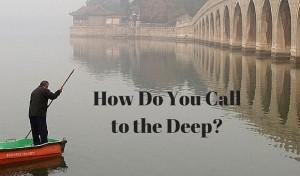By adopting practices of interaction largely stripped of symbols and moments to engage Depth, we cut ourselves off from the most powerful source of energy for creativity, connection, and change available to us.
Are you exploring the power of symbols in your work in conflict resolution and human development?
I am moved by an email I recently received from Samaritan Inns, which serves homeless people. “At Samaritan Inns, during every counseling session, we sit out one empty chair. Every client knows that this chair represents the person who isn’t here yet. This is the next client that walks through our doors and onto the road to recovery.”
That empty chair is a potent symbol of hope. It doesn’t take a lot of time or effort to place it, or to explain the meaning of its presence. It will be forgotten during most of an intense counseling session.
Yet it serves as a tangible, here-and-now reminder of things every person in counseling benefits from remembering. He or she is not the only one who suffers. The journey of recovery awaits, for all, whenever they choose to begin it. There is hope for things to get better.
As a symbol, the empty chair invokes these things without preaching, without words. It speaks silently, by its mere presence, to the depths that reside in all human beings but often remain untouched.
The Call to the Deep is often abused. All of us have been subjected to people who shout the Call or try to impose their interpretation of it on others.
As modern people we’ve rightly reacted to such manipulation. But we’ve also thrown out the baby with the bathwater. In adopting practices of interaction stripped of symbols and moments to engage Depth, we cut ourselves off from the most powerful source of energy for creativity, connection, and change available to us.
The Deep that resides within each human being (or “beyond”, if you prefer) offers its power only to those who seek it through hopeful choice. Loud proclamations, angry condemnations, and invocations of guilt obstruct access to this place.
In today’s world of competing narratives we’ve exhausted the power of words to call upon that place of deep knowing where we hear and remember Depth. I’m quickly bored and rarely moved by verbal strategies to take us there. I’m refreshed, intrigued, and inspired by non-verbal ones.
Movement, symbol, sound, smell, silence.
If you were to place an empty chair in your classroom, workshop, session, or meeting, what would you want it to symbolize?
With what symbols do you or might you remind the people you work with that they are not alone in their pain, that “this too shall pass”, that warmth and love still exist even if we don’t feel them right now, that moments of “better” will come, that forgiveness is possible?
What strategies and practices have you experimented with, or better, built into the routines of your work or life that invite all present to the River, that place of the Deep where human beings meet hope, light, and possibility for fresh beginnings?


